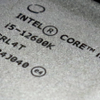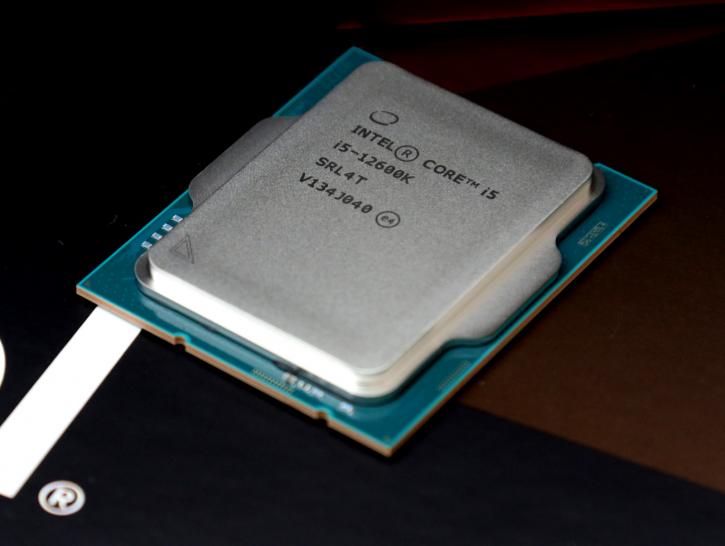Introduction
Core i5 12600K review
6x BIG and 4x Little
It's possible that the Core i5 12600K, with its six performance cores and four energy-efficient cores, will emerge as the most cost-effective ($289) and extremely well-performing processor in the Alder Lake series. It has a high level of performance, which is tied to DDR5 memory and a PCIe Gen 5.0 x16 lane interface. In contrast to AMD's products and Intel's Sapphire Rapids server processors, Alder Lake is a monolithic chip with no separated components. As a result, the large and small cores are both located on the same chip. Generally speaking, Alder Lake should result in an IPC improvement of approximately 19 percent, comparable to Skylake's relocation to Sunny Cove.
BIG versus little (Alder Lake)
As an alternative to Intel's previous releases, which focused solely on single-core and gaming performance, Alder Lake puts the company fully back in the multi-core ring, led by its squad of sixteen-core goliaths built on Intel's transistor-dense 10-nanometer manufacturing process. But this time, Intel delivers its own interpretation of the term BIG.little. We'll talk a little more about it on the following pages.
- Cores 10 (6+4)
- Threads 16 (12+4)
Intel will release a few product SKUs today; we test the 12900K and the 12600K. This article covers the Core i5 12600K, which is based on a 10 (6p+4e) golden Cove + Gracemont (hybrid-Design) core design, that's six performance cores (threaded to 12) and four energy-friendly cores. The new processors are fabbed based on Intel 7 (10nm Enhanced SuperFin) fabrication. With a base clock of 3.70 GHz, a Turbo Clock 4.90 GHz (1 core), and 4.50 GHz (all cores), the processor managed to impress us seriously. Of course, it's not just about the processor but rather the entire ecosystem and infrastructure. Connecting through DMI 4.0, 16GT/s (PCIe 4.0 x8) is the new Z690 chipset (motherboards), offering a choice between DDR5 and DDR4 memory configurations. DDR5 and PCIe Express 5.0 are among the first-ever for Intel products (16x PCIe 5.0, 4x PCIe 4.0). While the Adoption of PCIe 5.0 may take some time, DDR5 memory is here, and for most users, it will have a more significant impact on their day-to-day computing speed. The combination of all that memory bandwidth, faster infrastructure, and the new processors are bound to bring lots of performance towards end0-users in the creative and gaming field. We can already tell you; performance will not discourage.
- Core i9 12900K costs $589
- Core i9 12900KF costs $564
- Core i7 12700K costs $409
- Core i7 12700KF costs $384
- Core i5 12600K costs $289
- Core i5 12600KF costs $264
The KF model has its integrated graphics disabled. According to Intel, the primary consideration in making this decision was to maximize both performance per watt and overall performance. You should be aware that four E cores can be squeezed into the same silicon footprint as a single P core while yielding a combined 60 percent increase in multi-threaded throughput. Consider the following example: Because of the upgraded Golden Cove architecture and bursty, high-frequency approach, P cores appear to be particularly well suited for single- or low-thread applications. E cores work better together to assist push peak performance in programs that can take advantage of many threads to their maximum potential. Every chip has 16 PCIe 5.0 lanes, which can be used for either graphics or storage, though it should be noted that there are presently no devices that implement the specification.
Furthermore, as previously stated, motherboards will support either DDR4 or DDR5 memory, with native speeds of 3,200MHz or 4,800MHz, respectively, depending on the model. Once overclocking is started, you may expect both sets of frequencies to rise significantly higher. With the Z690, you get an additional 28 extension lanes, with 12 of them being PCIe 4.0. Given the fact that this is a brand-new platform, this feels a little stringy. You should expect to see a lot of Z690 boards featuring at least three high-speed (PCIe 4.0) NVMe storage slots, which will be similar to what is available on AMD's X570 board. Aside from the CPU, there is currently little information available on the built-in graphics. Because it is based on Xe technology and can support up to 32 Execution Units on the desktop, performance should be comparable to that of Rocket Lake's purportedly similar integrated graphics processor.
We have a lot to talk about and to explain; let's had on over into the article, where we'll start off with a bit more information bout the architecture that is Alder lake, the initial processors released, and of course, a full test of the processor. This article covers the Core i5 12600K, the more mainstream yet performance processor.


